Mark Anthony Neal's Blog, page 368
August 25, 2019
Raphael Saadiq Sets His Dark Meditation To Music With 'Jimmy Lee'
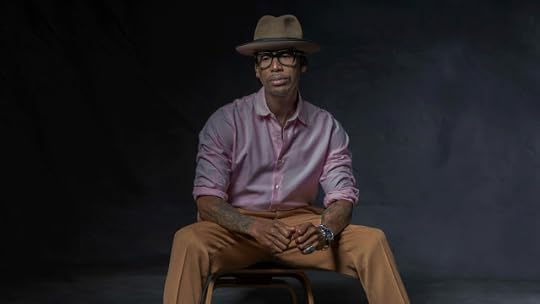 'Raphael Saadiq says his latest album, Jimmy Lee, is an examination on cycles of addiction and issues plaguing black communities. The album is inspired by the deaths of his brothers.' -- Morning Edition
'Raphael Saadiq says his latest album, Jimmy Lee, is an examination on cycles of addiction and issues plaguing black communities. The album is inspired by the deaths of his brothers.' -- Morning Edition
Published on August 25, 2019 19:02
A Dream Deferred –The Broken Promise of New York City Public Housing: Housing is Health (Episode 3)
 'Shelevya Pearson brought her newborn daughter Sakajawia home to NYCHA. Eleven years later, Shelevya claims that NYCHA's poor maintenance has played a role in her daughter's health conditions. Unfortunately, with children hospitalizations for asthma being higher in Brownsville than the rest of New York City, their story is not uncommon.' -- PBS
'Shelevya Pearson brought her newborn daughter Sakajawia home to NYCHA. Eleven years later, Shelevya claims that NYCHA's poor maintenance has played a role in her daughter's health conditions. Unfortunately, with children hospitalizations for asthma being higher in Brownsville than the rest of New York City, their story is not uncommon.' -- PBS
Published on August 25, 2019 12:35
Jazzmeia Horn On 'Love And Liberation'
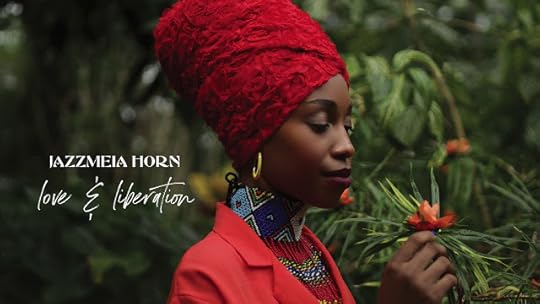 'NPR's Lulu Garcia-Navarro speaks with jazz singer Jazzmeia Horn about her sophomore album Love and Liberation.' --
Weekend Edition Sunday
'NPR's Lulu Garcia-Navarro speaks with jazz singer Jazzmeia Horn about her sophomore album Love and Liberation.' --
Weekend Edition Sunday
Published on August 25, 2019 12:26
August 22, 2019
Black Adornment and Adoration: A Praisesong for Black Fashionistas and The Culture that Made Them
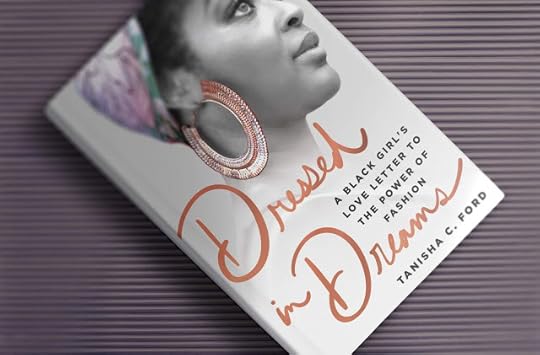 Black Adornment and Adoration: A Praisesong for Black Fashionistas and The Culture that Made Them | A Review of Dressed in Dreams: A Black Girl’s Love Letter to the Power of Fashion by Tanisha C. Ford Review by Sasha Panaram | @SashaPanaram | NewBlackMan (in Exile)
Black Adornment and Adoration: A Praisesong for Black Fashionistas and The Culture that Made Them | A Review of Dressed in Dreams: A Black Girl’s Love Letter to the Power of Fashion by Tanisha C. Ford Review by Sasha Panaram | @SashaPanaram | NewBlackMan (in Exile)Can you recall the first item of clothing that you ever desired? What did it look like? Who else wore it? Why did you want it? How did you go about getting it? And if you couldn’t get a hold of it, what did you do next?
These questions about style and self-definition, about fashion and fashioning ourselves animate Tanisha C. Ford’s latest book, Dressed in Dreams: A Black Girl’s Love Letter to the Power of Fashion, which traces how clothes function as “archive of memories” and garments of generational history that reveal intricate and often overlooked life stories (3). Trained as a historian whose work focuses on social movement histories, material culture, feminist issues, and girlhood studies, among others things, Dressed in Dreams marks a departure from Ford’s previous writing insofar as it turns to her childhood in Fort Wayne, Indiana as a starting point for staging questions pertaining to black innovation in fashion. The result is a book that while about fashion is also about race, class, gender, family, and sisterhood, which is to say it is a book about coming of age, coming into blackness with clothes.
The book’s mantra is clear from the very first page where Ford, a dashiki daughter to a black militant father and a black bohemian mother, declares that, “clothes are never just garments” (1). Indeed what follows is ten chapters and an epilogue organized around markers of black style ranging from tennis shoes to bamboo earrings to afro puffs to the hoodie that treat articles of clothing and forms of self-adornment as windows into personal aspirations, political projects, and social currency. In what seems like and is, in fact, a journey into the past through a carefully constructed black closet led by clothes lover and trendsetter Ford, herself, we watch as a Midwestern black girl answers back to a factory town that sought to stifle her dreams.
In addition to disclosing how individual items of clothing, hairstyles, and accessories connect black women and girls across disparate parts of the country (“The neat stack of Ebony and Essencemagazines under the coffee table weren’t mere decoration. Through them she [my mother] could be in conversation with black women across the country”) or how clothing reaffirmed the lives of people constantly made to feel that they did not belong (“our baggy jeans spoke a common language, one that rooted us black teens – mostly from poor and working-class families on the fringes – in a community of young folks struggling to eke out a voice in a world that constantly showed it didn’t love on us”), part of Dressed in Dreams greatest contribution is how it delves into the histories of familiar Black beauty products.
For instance, in a humbling and hilarious chapter on the “Jheri Curl,” Ford tackles “the most maligned hairstyle in black history… the messiest, drip-droppiest, smelliest hairstyle ever invented” that posed “a hazard to your furniture, and it was terrible for the health of your hair” (42). Describing how a trip to Los Angeles both reacquainted her with her Aunt Brenda and introduced her to a new look known as the Wave Nouveau, Ford reflects on how her early experiences at hair salons and watching black women style their hair made her believe that, “there was a complex sorcery crucial to black womanhood and I was gonna have to become an alchemist” (47). Between the laughter and lamentations, Ford dispels a common misperception that black women’s aspirations for “good hair” is synonymous with a desire for “whiteness.” Instead, she explains how “good hair” actually refers to hair that is easy to style before turning to the history of Robert “Jheri” Redding, a Midwestern hairstylist from Chicago, who relocated to Los Angeles in the 1940s and built a hair-care empire that included products such as Nexxus and Redken (48). She proceeds to describe how Redding partnered with Dr. Willie Morrow, who adapted the permanent wave process for black hair, and expanded his hair-care empire to cater to black clientele. Like the chapter on the afro puff that introduces us to the Carol behind Carol’s Daughter, this section on the jheri curl reveals the face beneath the hair.
In another chapter, “Tennis Shoes,” Ford recalls the rise of hip hop fashion and the sought after Nike Cortez sneakers known in the Midwest and other parts of the upper South as “Dopemans.” Charting the pervasiveness of drug culture and gangs alongside how hip hop fashion garnered national attention, Ford explains how Nike – the then relatively unknown brand – emerged into what it is today partly after Bill Bowerman, a track and field coach at the University of Oregon and Olympic trainer, teamed up with his business partner Phil Knight to create a shoe for the 1972 Summer Olympics that would protect athletes from injuries. When Nike tapped N.W.A. front man Eric “Eazy-E” Wright to endorse the sneaker alongside Farrah Fawcett and Whitney Houston who were already repping the shoe, they embraced street culture in a way that no one had done yet. “It’s hard to imagine now what an insightful move that was,” writes Ford (85).
Inasmuch as the subtitle of Ford’s book – “A Black Girl’s Love Letter to the Power of Fashion” – frames it as a text that honors how fashion emboldens people every day, it is just as much a love letter to her own mother, Amye Glover. Described as a dreamer who procured her own fabric, sewed her own dashikis, and embraced audacious prints, Amye knew all too well how clothes functioned as armor. According to Ford, she wanted her daughter to have what she had namely, “the confidence to know that what you wore was a statement of your personality, your beliefs, your politics” (39). Although the items they shared including leather jackets and handbags are material markers of their mutual appreciation of style, the immaterial lessons left behind about using clothes to bolster cultural pride or build better worlds are just as enduring as their material counterparts. As Ford puts it, “It wasn’t about the material items themselves, it was about the hard-fought journey to financial stability, the feeling of being starved of your desires for most of your life and then finally the access, finally being able to indulge” (240). Dressed in Dreams is a praisesong for Amye and as sure a sign as ever that Tanisha C. Ford is her mother’s daughter. Said slightly differently, Dressed in Dreams celebrates the woman, Amye, and the women and girls including Aunt Brenda, Crystal, Shan, Cher, Phylicia, Nana, and so many more who helped Ford flourish and fly freely through fashion.
In the Acknowledgements section to her book, Ford concludes with a note specifically to black girls and non-binary femme who like her came from a small town: “I see you, I acknowledge you. I hope you see yourself in my story – our collective story – and realize sooner than I did that you don’t need anyone’s permission to dream” (246). Indeed, this is a book about looking backward and forward all at once, grasping will full clarity all the people and places that contribute to our formation, and walking unafraid into a future unfolding in front of us. This dreamy book is about living blackness boldly, beautifully, and perhaps, most importantly, besides one another. +++
Sasha Panaram (@SashaPanaram) is a Ph.D. student (ABD) in English at Duke University. A Georgetown University alumna, her scholarly interests are in Black diasporic literature, black feminisms, and visual cultures.
Published on August 22, 2019 18:19
Poems For Billie Holiday And Bessie Smith From The Blair House Collective
 'In the fall of 2018, Adia Victoria approached Ciona Rouse and Caroline Randall Williams about coming together for a group reading to celebrate her work as a blues musician. After attempts to meet at various locations all over town, the three women found themselves at Caroline's house on Blair Blvd. The house is old, high-ceilinged, wild and bought and paid for by another Black woman writer — novelist Alice Randall. When Adia, Ciona and Caroline sat down on the black velvet couch in the Blair House living room, a sisterhood was born. Together the three women have worked to number a series of creative projects together. The first, a series of poems devoted to Rosie, a blues woman of their own conception, inspired them to start thinking about the living, breathing, earthbound women who inspired their archetypal Rosie. Billie Holiday and Bessie Smith were the natural next thought.'-- NPR Music
'In the fall of 2018, Adia Victoria approached Ciona Rouse and Caroline Randall Williams about coming together for a group reading to celebrate her work as a blues musician. After attempts to meet at various locations all over town, the three women found themselves at Caroline's house on Blair Blvd. The house is old, high-ceilinged, wild and bought and paid for by another Black woman writer — novelist Alice Randall. When Adia, Ciona and Caroline sat down on the black velvet couch in the Blair House living room, a sisterhood was born. Together the three women have worked to number a series of creative projects together. The first, a series of poems devoted to Rosie, a blues woman of their own conception, inspired them to start thinking about the living, breathing, earthbound women who inspired their archetypal Rosie. Billie Holiday and Bessie Smith were the natural next thought.'-- NPR Music
Published on August 22, 2019 17:41
August 20, 2019
Virgil Abloh: ‘Figures of Speech’
 'In this video produced for the exhibition Virgil Abloh: ‘Figures of Speech’ at the Museum of Contemporary Art Chicago, Abloh discusses his wide-ranging influences and the creative philosophy that has shaped his career in fashion and beyond.' -- Museum of Contemporary Art Chicago
'In this video produced for the exhibition Virgil Abloh: ‘Figures of Speech’ at the Museum of Contemporary Art Chicago, Abloh discusses his wide-ranging influences and the creative philosophy that has shaped his career in fashion and beyond.' -- Museum of Contemporary Art Chicago
Published on August 20, 2019 19:20
This Is What the Early Days of Digital Were Like
 'Dial-up, floppy disks, Listservs. If you don’t know what any of these terms mean, you weren’t using computers back in the '80s and ’90s. Use this reel to brush up on your early digital era history. You’ll be schooled by programmers who created created ctrl+alt+del and Tetris, an artist who makes drawings with Excel, the voice behind AOL’s iconic “Welcome! You’ve got mail!” message and the last man standing in the floppy disk business.' -- Great Big Story
'Dial-up, floppy disks, Listservs. If you don’t know what any of these terms mean, you weren’t using computers back in the '80s and ’90s. Use this reel to brush up on your early digital era history. You’ll be schooled by programmers who created created ctrl+alt+del and Tetris, an artist who makes drawings with Excel, the voice behind AOL’s iconic “Welcome! You’ve got mail!” message and the last man standing in the floppy disk business.' -- Great Big Story
Published on August 20, 2019 18:46
The Alvin Ailey American Dance Theater at 60
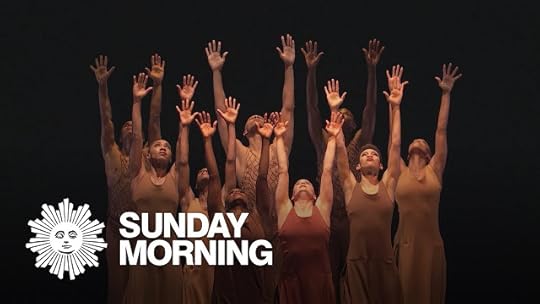 'The Alvin Ailey American Dance Theater, founded by the groundbreaking dancer-choreographer Alvin Ailey (1931-1989), is celebrating 60 years as one of the world's preeminent modern dance companies. Rita Braver looks back at the legacy of Ailey, including his school for aspiring dancers, and talks with those who succeeded him as the company's artistic director, Judith Jamison and Robert Battle.' -- CBS Sunday Morning
'The Alvin Ailey American Dance Theater, founded by the groundbreaking dancer-choreographer Alvin Ailey (1931-1989), is celebrating 60 years as one of the world's preeminent modern dance companies. Rita Braver looks back at the legacy of Ailey, including his school for aspiring dancers, and talks with those who succeeded him as the company's artistic director, Judith Jamison and Robert Battle.' -- CBS Sunday Morning
Published on August 20, 2019 18:21
Algee Smith Talks Toxic Masculinity In "Euphoria" And The World
 'Algee Smith discusses his Euphoria character, McKay, and how his internal frustrations reflect major societal issues.'-- BUILD Series
'Algee Smith discusses his Euphoria character, McKay, and how his internal frustrations reflect major societal issues.'-- BUILD Series
Published on August 20, 2019 18:01
James Baldwin vs William F Buckley: A Legendary Debate from 1965
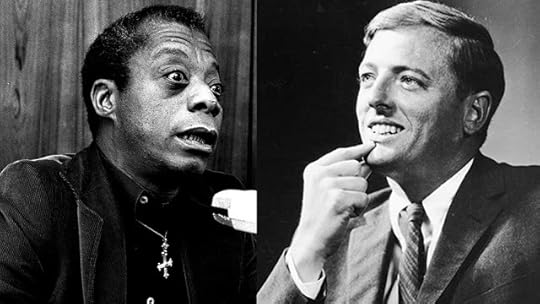 'In 1965 at the University of Cambridge, two of the foremost American intellectuals were challenged with the question: ‘Has the American Dream been achieved at the expense of the American Negro?’ From William F Buckley’s highly stylised posturing and pointing, to James Baldwin’s melodious rhetorical flourishes and memorable scowls, what’s become known as the ‘Baldwin-Buckley Debate’ now stands as one of the archetypal articulations of the dividing line between US progressives and conservatives on questions of race, justice and history. Baldwin, the famed African-American writer, whose reputation as a progressive social critic and visionary Civil Rights activist has only risen in the intervening decades, argues that the very foundation of US society is built on the dehumanisation of its African-American population.' -- Aeon Video
'In 1965 at the University of Cambridge, two of the foremost American intellectuals were challenged with the question: ‘Has the American Dream been achieved at the expense of the American Negro?’ From William F Buckley’s highly stylised posturing and pointing, to James Baldwin’s melodious rhetorical flourishes and memorable scowls, what’s become known as the ‘Baldwin-Buckley Debate’ now stands as one of the archetypal articulations of the dividing line between US progressives and conservatives on questions of race, justice and history. Baldwin, the famed African-American writer, whose reputation as a progressive social critic and visionary Civil Rights activist has only risen in the intervening decades, argues that the very foundation of US society is built on the dehumanisation of its African-American population.' -- Aeon Video
Published on August 20, 2019 17:48
Mark Anthony Neal's Blog
- Mark Anthony Neal's profile
- 30 followers
Mark Anthony Neal isn't a Goodreads Author
(yet),
but they
do have a blog,
so here are some recent posts imported from
their feed.



